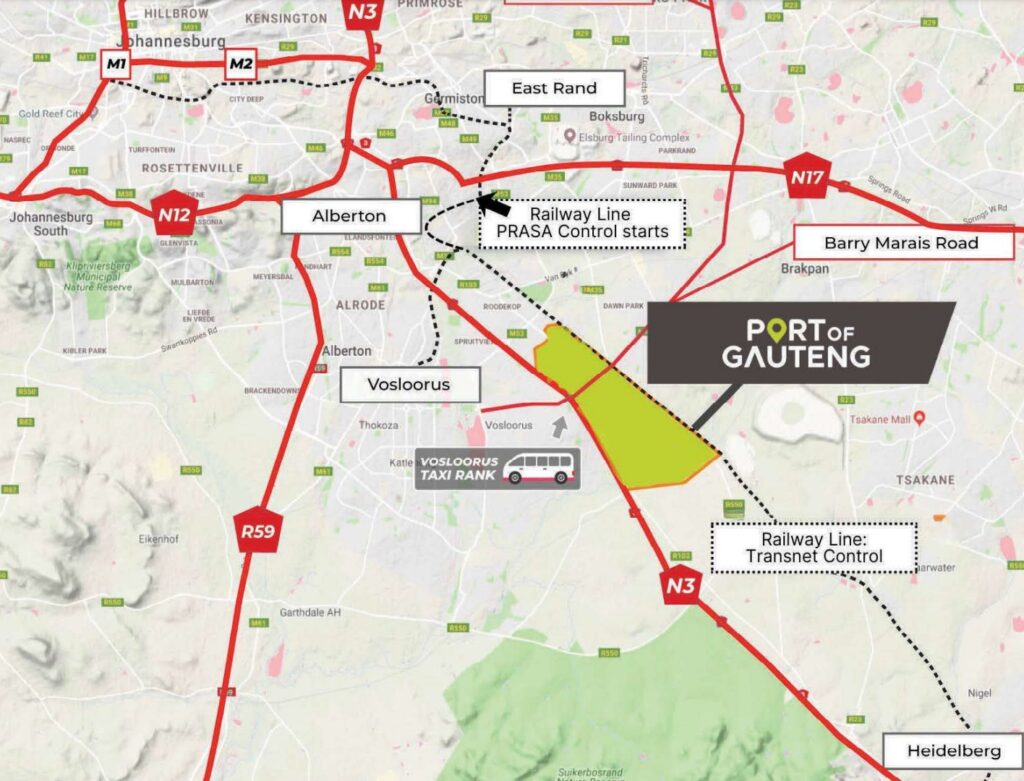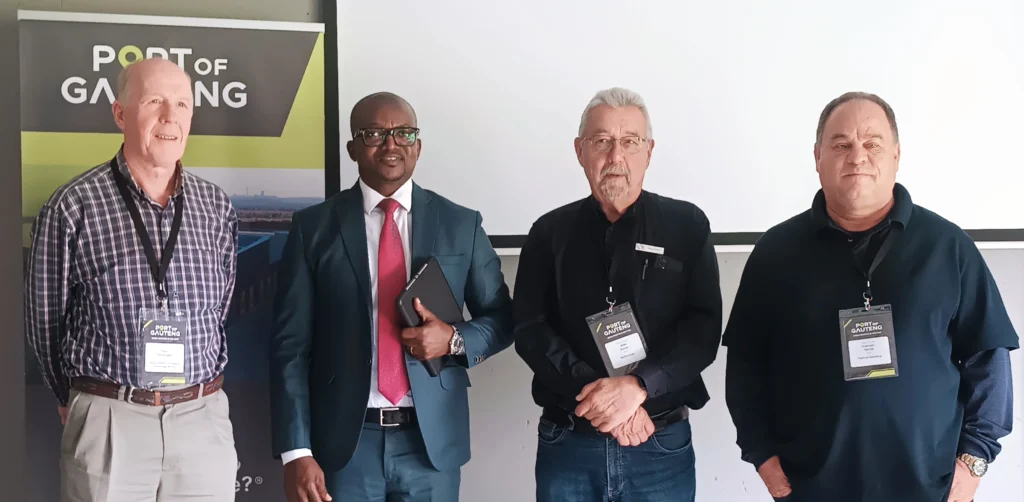R50 Billion Port of Gauteng Project Faces Government Silence Despite Launch Invitation
The Port of Gauteng has unveiled an ambitious R50 billion white paper detailing plans to revolutionize South Africa’s logistics infrastructure, yet the landmark announcement has been met with notable government silence despite developers extending formal invitations to officials.
“Since the 2013 National Development Plan set ambitious 2030 targets for shifting freight from road to rail, little progress has been made — and with just four years to go, the need for decisive action is urgent. As road congestion worsens and rail volumes decline, this paper outlines a practical solution — leveraging the Port of Gauteng’s R50 billion inland port to restore balance, reduce costs, and unlock long-term economic growth,” Nortjé.
Released at the start of Transport Month, the comprehensive white paper outlines how the inland logistics hub aims to transform Africa’s freight transport landscape by tackling critical inefficiencies plaguing South Africa’s current logistics system.
The development promises to create over 50,000 permanent jobs while significantly enhancing road safety across the country’s congested freight corridors.
“We’re creating Africa’s most advanced inland trade gateway. This facility represents our commitment to solving South Africa’s freight crisis whilst generating massive economic returns,” Francois Nortjé, Developer of Port of Gauteng explained.
E-Commerce Boom Drives Urgent Need
Nortjé says the timing of the Port of Gauteng initiative coincides with South Africa’s economic shift toward a higher-volume, lower-margin business model.
The arrival of e-commerce giants including Shein, Temu, and Amazon in South Africa is accelerating this transformation, with implications extending beyond consumer goods.
Import volumes for vehicles are also surging rapidly. As these companies scale their operations, industry analysts predict a major shift from air freight to container shipping, which will place unprecedented pressure on the already overburdened Durban-Gauteng Freight Corridor.

Government Absence Raises Questions
Despite the project’s significance and formal invitations sent to government representatives, no official government presence or response has been recorded at the white paper launch or in its immediate aftermath.
The absence of government engagement has raised questions about official support for the R50 billion infrastructure project, which developers position as crucial to meeting South Africa’s evolving logistics demands.
The Port of Gauteng white paper marks what developers describe as a pivotal milestone for inland logistics development in the region, though its future progress may depend on securing government backing and regulatory approvals.
If all goes as planned, Nortjé expects the project to be up and running by 2027.
The Port will feature two 2.2-kilometre flat rail alignments designed for efficient container handling, along with integrated solar power, rainwater harvesting, and advanced recycling systems.
The planned facility will include a world-class car terminal, and container rail terminal, enabling rapid, high-volume throughput and seamless train-to-truck transfers.

